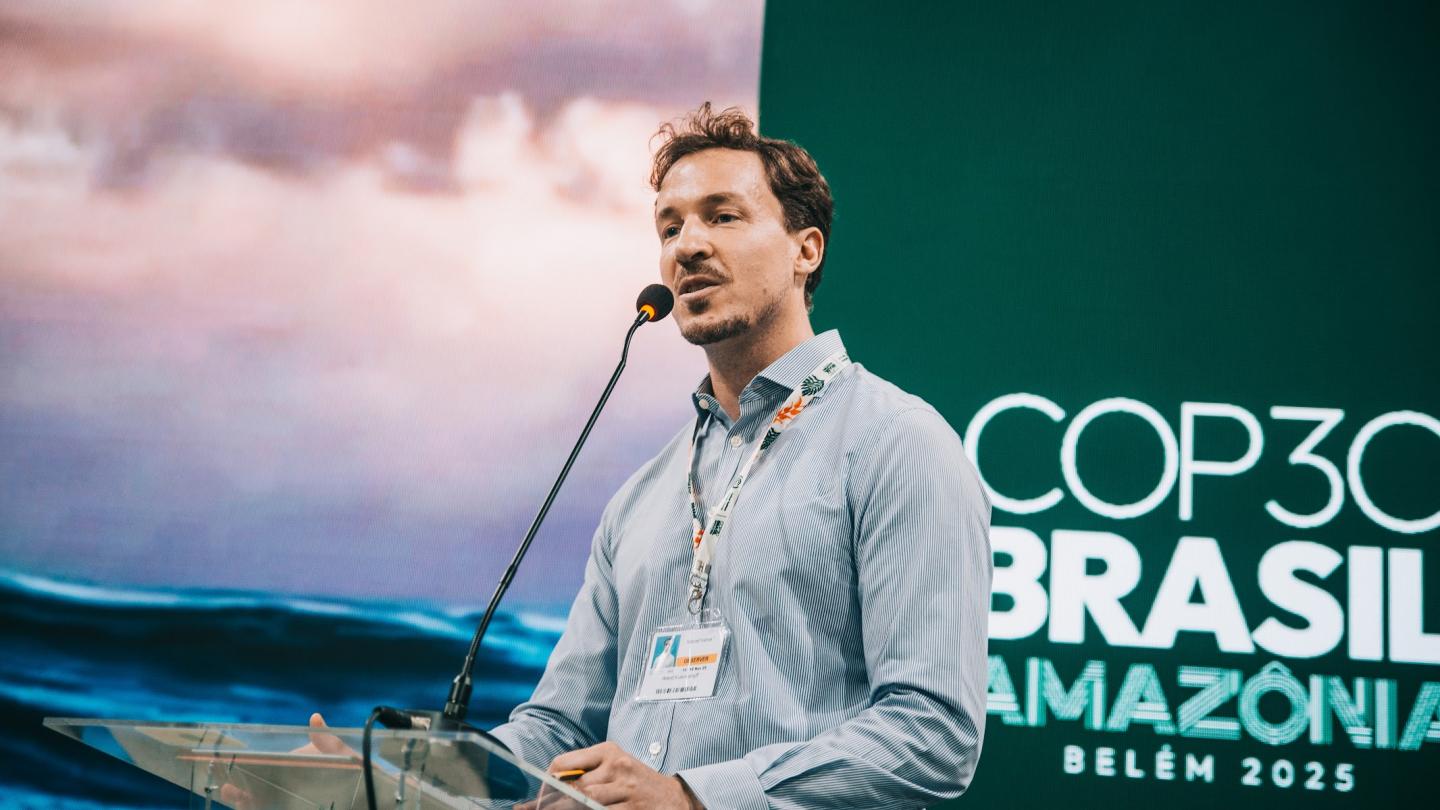
The United States’ pullback from COP30 raised fears of stalled momentum in climate finance. Instead, the summit in Belém, Brazil, this week signaled a shift in how governments and financial institutions approach nature as a core pillar of climate policy.
For Arend Kulenkampff, innovative finance lead at NatureFinance, the meeting marked a turning point.
“Credibility is built on trackrecord, and in this sense COP30 marks a major milestone in the scaling-up and mainstreaming of global climate finance,” he told Investment Officer.
Beyond diplomatic statements, the talks introduced elements of financial infrastructure that could make conservation and ecosystem protection investable at scale.
“Many of the events at the Conference were about showcasing successful climate and nature financing deals of the recent past, especially those involving ‘blended’ public-private finance solutions,” Kulenkampff said. “These enable a smaller base of public capital to mobilize larger sums of private investment than would be possible under the prevailing loan- and grants-based development paradigm.”
U.S. steps back
The U.S. retreat left a gap in climate finance leadership, but Kulenkampff said the country’s earlier work continues to shape the field. Debt-for-nature swaps in Belize, Gabon and Barbados—developed with support from the International Development Finance Corp. and groups such as The Nature Conservancy—provided the first large-scale models for blending public and private capital in nature-rich countries.
“These blueprints are now widely understood,” he said. More recent transactions in Côte d’Ivoire, the Bahamas and El Salvador brought in private lenders, philanthropies and non-U.S. development institutions. “It’s unfortunate the U.S. is stepping back,” he said, “but in another sense they’re stepping aside and allowing others to carry the work forward.”
Debt-for-nature swaps allow countries to restructure sovereign debt in return for conservation commitments, creating predictable funding for environmental programs.
Blended finance grows
One of the most consequential developments in Belém was the launch of the Tropical Forests Forever Facility, or TFFF. The multibillion-dollar vehicle is backed by Brazil, the United Kingdom, Norway, the Democratic Republic of Congo and major philanthropies.
The facility offers long-term, performance-based payments to countries that preserve forests. These cash flows can support sustainable development projects and, over time, offer the basis for vehicles suited to institutional investors. At least 20 percent of funds are directed to Indigenous peoples and local communities.
“TFFF is the kind of risk transformation needed to align institutional investors with the financing needs of nature-rich countries,” Kulenkampff said. “It allows fiduciaries to meet their responsibilities while channeling capital where it’s most needed.”
Pricing nature’s value
For Kulenkampff, the largest barrier to scaling conservation finance is that ecosystems generate economic value but not financial return. “The value of nature and biodiversity simply isn’t reflected in higher risk-adjusted returns,” he said. “And that’s compounded by the high cost of capital in many nature-rich countries.”
The result is a disconnect: nature loss increases physical and financial risks across sectors, yet investors lack pricing signals that reward conservation. The issue, he added, is not a shortage of opportunities but a shortage of structures that convert ecological resilience into stronger creditworthiness and investable returns.
Bioeconomy pathway
COP30 attempted to close that gap, Kulenkampff said. A major step was the launch of the Bioeconomy Challenge, a global platform intended to turn the G20’s bioeconomy principles into measurable actions and scalable solutions by 2028. NatureFinance serves as the initiative’s executive secretariat.
The bioeconomy, formally recognized for the first time in a COP decision, was presented as a pathway for countries to meet climate goals while delivering nature-positive growth. Working groups led by FAO, the Inter-American Development Bank, UNCTAD and the World Resources Institute will focus on standards, metrics and financing tools that link ecosystem regeneration to investment.
Kulenkampff said the business case for nature is “gradually crystallizing” and should strengthen as the initiative clarifies data, reduces risk and builds market structures.
Brazil’s environment minister, Marina Silva, called the bioeconomy “an essential part of the roadmap to end deforestation.”
U.K. minister for nature Mary Creagh said governments must “create the conditions for private investment in high-risk, high-value technologies.” Germany’s environment minister, Carsten Schneider, said a circular bioeconomy can align environmental protection, economic growth and social equity. Indigenous leaders stressed that land protection is the foundation for any financial model.
Investor hesitation
Asset managers were less visible in Belém than at previous COPs, prompting speculation about political risk or limited confidence in governments. Kulenkampff disagrees.
“Many financial institutions, including U.S. firms, were active in the pre-COP finance discussions in São Paulo,” he said. “They are simply being less public about their shift toward climate- and nature-resilient investment.”
That lower profile, he said, reflects normalization. Investors increasingly understand the mechanics of blended finance structures and the governance frameworks needed to scale them. “Many investors know what to do, and increasingly how to do it, albeit quietly,” he said.
NatureFinance’s role
NatureFinance, as a global NGO with headquarters in Geneva, has played a central role in developing the concepts that underpin emerging nature markets. The organization works with governments, development banks and financial institutions to integrate nature into financial systems, create credit-enhancement structures and develop markets for sovereign debt solutions and bio-based industries.
“We now have the blueprints, and increasingly the models, that allow capital to move toward nature with confidence,” Kulenkampff said.














